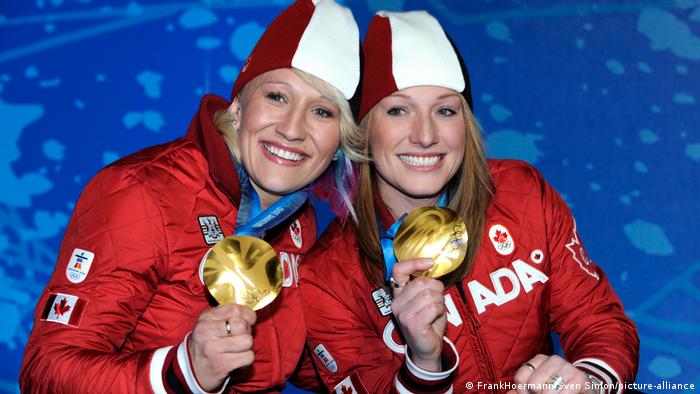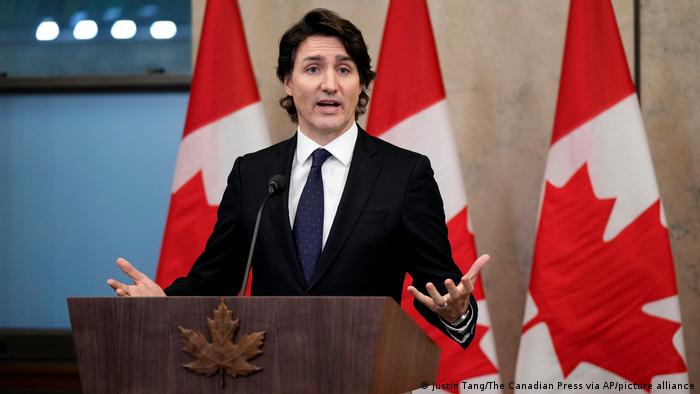Although she has been competing for the United States for three years, seeing Kaillie Humphries in red, white and blue at the Yanqing National Sliding Center on Monday was still a bit strange. Born in Calgary, Alberta, the 36-year-old had previously won two gold medals and a bronze for Canada in the two-woman bobsled.
But after filing a harassment lawsuit against a former coach, her bobsled now sports the stars and stripes, and her gold medal in the women's monobob gives the US seven at Beijing 2022.
The event, the first of its kind at the Olympics, was Humphries' to lose. She set a course record on her first run on Sunday and had a second-and-a-half lead going into the final run on Monday. She wound up with a total time of 4:19.27, 1.54 seconds ahead of Monobob World Series winner Elana Meyers Taylor.
Afterward, Humphries jumped out of her sled, threw an American flag in the air and yelled "USA! USA!" During the medal ceremony, she proudly sang along with the "Star Spangled Banner," the American national anthem.
The gold medal was Humphries' third, and given all she's done for bobsledding, it was only appropriate that she is the first monobob Olympic champion. But her victory came long before her arrival in Beijing.
Change of allegiance
Humphries has admitted that after every Olympics there is a lull when the fanfare and press tours are done. Following the 2018 Winter Olympics in Pyeongchang, the lull led to a depression she didn't fully understand.
"It's not something I chose. I'm not ashamed of it, either," Humphries told the Player's Own Voice, a podcast from the Canadian Broadcasting Corporation, in 2019. "My body had given up. My mind had shut off completely from what had occurred during the Olympics."
This Olympic hangover was also different, Humphries said, because of the verbal and mental abuse received from head coach Todd Hays leading up to the Pyeongchang Games. In 2018, she filed a harassment complaint against Bobsleigh Canada Skeleton (BCS) and asked to be released from the federation.
An initial independent investigation found in September 2019 that there was "insufficient evidence" to support Humphries' harassment complaint. However, the Sport Dispute Resolution Centre of Canada found that the investigation, conducted by Hill Advisory Inc., was "neither thorough nor reasonable."
Meanwhile, Humphries had been released by Canada bobsled and began competing for the United States in the 2019-20 World Championships.
"I didn't recognize myself. I felt unsafe in my environment, I was scared physically for my safety as well as for my mental health," Humphries told DW before Beijing 2022.
"I love the country and the support and the people, the citizens of Canada. I just could no longer work with Bobsled Canada as a federation and needed to move on."
Learning who 'real friends are'
She added that the switch hasn't necessarily changed her relationships within the bobsledding world. If anything, it has strengthened the way people have always felt about her.
"The people that liked me still like me. The people that didn't like me were given more ammo to not like me," she said. "I've definitely seen the true colors of people and you learn very quickly who your actual real friends are and who actually cares about you.
"When it comes to issues of abuse and harassment and safety within sport, it's a very hard topic to discuss and you learn very quickly who actually believes in you, is on your side and wants you to be in a very safe, positive, great environment and who wants to see you fail."

Kaillie Humphries (left) also won Olympic medals for her former country
For Meyers Taylor, Humphries' longtime rival and training partner, the switch to the US team hasn't really changed much about their relationship.
"It's funny actually because I train less with her now than I did when she was Canadian," Meyers Taylor said. "Whether she has the Canadian flag on her or the American flag, I was going to have to go toe-to-toe with her and beat her, regardless."
Becoming part of Team USA
Although she was already in her third year of competing for the United States, until just a few weeks ago it still wasn't clear whether Humphries, who now resides with her husband Travis Armbruster in San Diego, would be able to compete in her fourth Olympics. The International Olympic Committee (IOC) requires an athlete to have citizenship in the country they represent, and until December, the bobsled legend only had residency. She admitted that the cloud of her citizenship was "extremely hard and it weighed a lot on my heart and my mind."
But on December 2, Humphries was granted American citizenship, making her eligible to compete for Team USA. So there she was, pushing her stars-and-stripes monobob sled at the Yanqing Sliding Center with the same power and ferocity she had for years.
She's also set to compete in her specialty, the two-woman bobsled, later this week. For her, winning the gold medal will undoubtedly be another career highlight, but her real victory in Beijing came long before the Games started.
"I stood up for myself. A lot of people don't, won't, and it was extremely hard," Humphries said. "I feel mentally so much stronger as a female athlete to have pulled myself out of such a dark place and to know that a country supports me in the process."
























